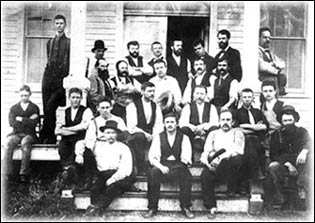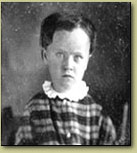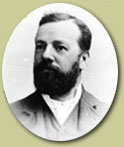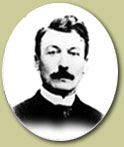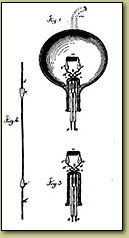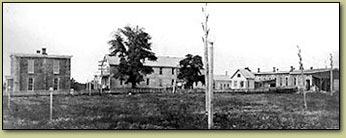|

During his most inventive years, Edison conducted experiments at his Menlo Park, New Jersey, laboratory. He did not work alone. A team of talented workers assisted him all hours of the day and night. These men had the skills to make Edison's ideas and sketches into real devices of wood, wire, glass, and metal.
Edison's workers came from all over the world. The group included: Charles Batchelor, Edison's chief mechanical assistant from England; Ludwig Boehm, a German glassblower; John Kruesi, a Swiss clockmaker; Francis Upton, a mathematician, as well as carpenters, machinists, and general laboratory helpers.
The laboratory at Menlo Park was an "invention factory" and a business. Bookkeepers and secretaries kept track of the money needed to run the business.
Samuel Mott was a draftsman who made official drawings to be sent to the United States Patent Office in Washington, D.C., or to patent offices in foreign countries. Patents, or exclusive rights to make the inventions created at Menlo Park, were an important part of Edison's activities. They proved that the inventions were Edison's and no one else's.
Grosvenor Lowery was Edison's lawyer. His job was to raise money for Edison's laboratory so that he had the equipment he needed to continue his experiments. Lowery often promoted Edison's ideas before they had become real.
On December 31, 1879, Thomas Edison demonstrated his most famous invention: the first practical incandescent electric lamp. He was not, however, the first inventor to experiment with electric light. When Edison began testing possibilities for incandescent lamps, the arc light was already becoming popular for lighting streets, department stores, and other large areas.
Incandescent lamps make light by using electricity to heat a thin strip of material (called filament) so hot that it glows. Many inventors tried to perfect incandescent lamps to "sub-divide" electric light or make it smaller and weaker. These 1878 lamps are examples of less successful versions of the incandescent lamp patented by other inventors before Edison completed his practical lamp in 1879.
One of the most important features of Edison's lamp and electrical system was the simple, modern socket familiar to us today.
Edison tried to find a material that would become incandescent and not melt when heated by electricity. For a long time he tried platinum, but finally he made his filaments by carbonizing a kind of cardboard called Bristol board.
In earlier lamps, too much oxygen caused the filaments to burn. Edison acquired the best vacuum pumps so he could empty his bulbs of as much air as possible. Because of this, his carbon filaments did not burn.
Edison's men used vacuum pumps to evacuate electric lamps. Edison also developed an entire system to make electricity and distribute it to many places at the same time. Edison's system included dynamos, switches, electric meters, fuses, distribution lines, and regulators.
Edison spent the next few years working on an electrical system that would be successful commercially. This meant he had to be certain that he could make a central power station and that his electricity would be cheap enough for people to afford.
Soon Edison demonstrated that his system could become a commercial success. Harper's Weekly published this drawing of men laying tubes for electrical wires to Edison's system in June 1882. That year the Pearl Street generating station began to supply electricity to streets and buildings in a small area of New York City.
top
|
